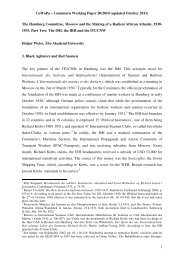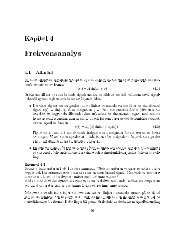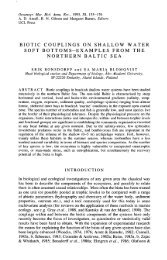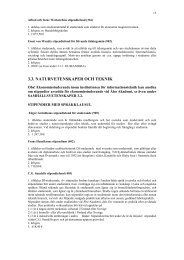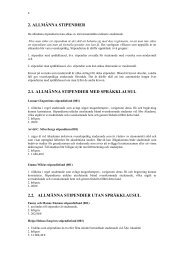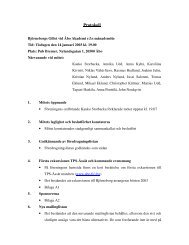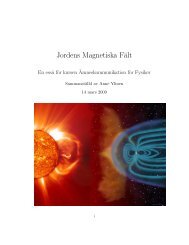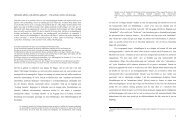C o W o P a – C omintern W orking P aper 6 / 2006 1 ... - Åbo Akademi
C o W o P a – C omintern W orking P aper 6 / 2006 1 ... - Åbo Akademi
C o W o P a – C omintern W orking P aper 6 / 2006 1 ... - Åbo Akademi
You also want an ePaper? Increase the reach of your titles
YUMPU automatically turns print PDFs into web optimized ePapers that Google loves.
C o W o P a <strong>–</strong> C o m i n t e r n W o r k i n g P a p e r 6 / <strong>2006</strong><br />
(Western) Europe during the post WWI period. The LDRN was in 1929 already a well known<br />
political actor in France and its founder, the Senegalese Lamine Senghor, had established contacts<br />
with various radical and leftist organizations. Although the LDRN was not a communist<br />
organisation, as the French authorities claimed, Senghor, who died already at the end of 1927, had<br />
close links with the French Communist Party (Parti Communiste Française, PCF) and communistled<br />
front organizations, especially the League Against Imperialism (LAI). Senghor was a founding<br />
member of the LAI and belonged to its Executive Committee. A key figure of the LAI was its<br />
founder, the German communist Willi Münzenberg (1889-1940). Münzenberg was the Secretary<br />
General of the LAI but, more than so, he was also the head of the Workers International Relief<br />
(WIR or Internationale Arbeiterhilfe, IAH). Moreover, he was to become a key sponsor of<br />
politically motivated Africans in Germany, as will be discussed below.<br />
However, apart from the few notes by Rüger and Oguntoye not much has been known<br />
hitherto about the further activities of the DSLVN. The main reason for this is the paucity of<br />
documentation. Rüger, in fact, does not give any references for his information about the foundation<br />
of the DSLVN by Bell and Bilé on 17 September 1929 and Oguntoye’s sketch is based only on<br />
documents found in the archives of the Reichskolonialamt. However, recent archival research by<br />
my research group in Moscow and Berlin has been able to locate some further documents on both<br />
the activities of Bilé <strong>–</strong> especially his links with Münzenberg <strong>–</strong> and the DSLVN in 1930. 6<br />
I.<br />
Little is known about political activism by Africans in Weimar Germany. One of the earliest<br />
African political organizations was perhaps the African Association for Solidarity, which existed<br />
already in 1918. Not much is known about the Association: it is unknown how long it existed, its<br />
purposes and goals, or its relationship with the state. However, according to a membership list from<br />
June 1918, the Association claimed among its membership 32 Africans all across Germany,<br />
including Berlin, Hamburg, Breslau and Bavaria. 7 At least in 1919 most of its members were still<br />
politically active as they were among the signatories of the 1919 petition. Thereafter, not much is<br />
known about political activism of Africans in Weimar Germany. Risto Marjomaa’s investigation on<br />
the activities of the League Against Colonial Oppression (LACO), the forerunner of the LAI, gives<br />
reference to two West Africans, Makube and Munumi, that were present at a meeting in the Berliner<br />
6 The original documents are reproduced as DACCO 8 and DACCO 9.<br />
7 See further Clarence Lusane, Hitler’s Black Victims: The Historical Experience of Afro-Germans, European Blacks,<br />
Africans and African Americans in the Nazi Era, Routledge: New York 2003, 84-85. Lusane obtained a copy of the<br />
membership list from Theodor Michael whose father, Th. Wonja Michael, had been a member of the association.<br />
2




